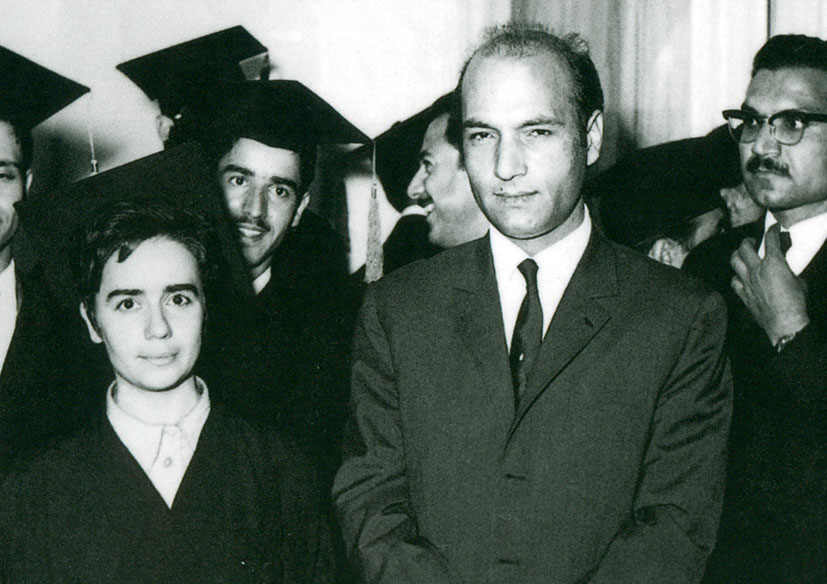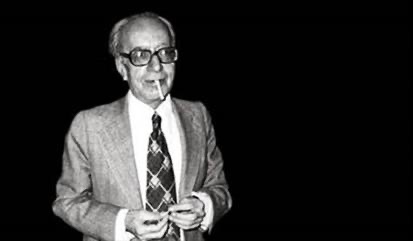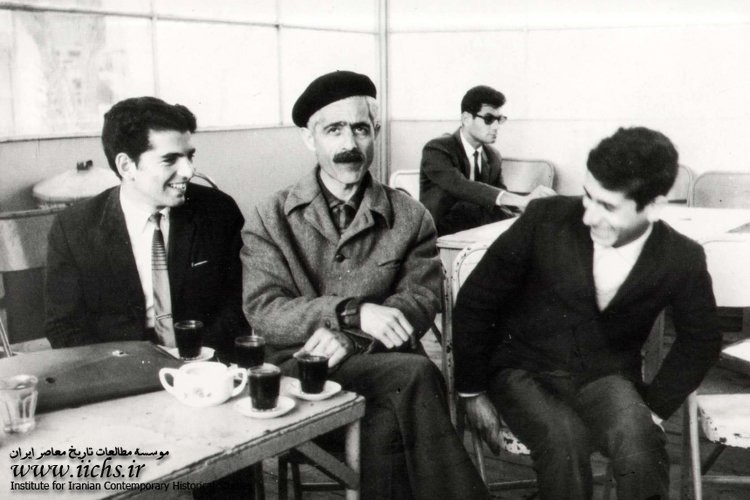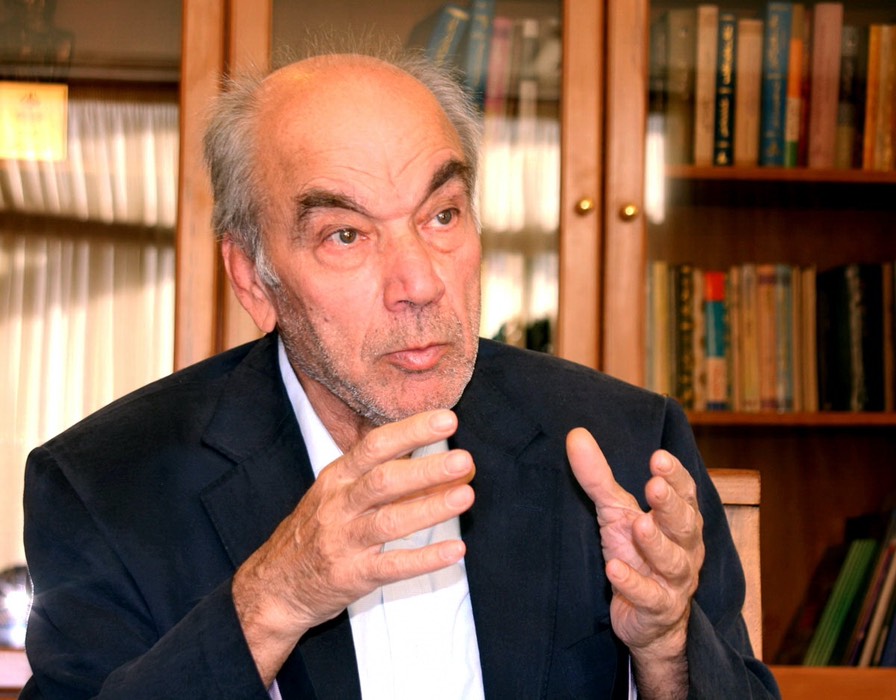HEIDEGGER IN IRAN
Iran could be described as the antitype to us, the West, and the Iranian revolution in 1979 was a brutal challenge to our sense of the direction of history, the destiny of the world which we had assumed was headed in the direction of a secular democracy, whether 'democracy' was conceived as liberal or Communist in nature. (6) It happens that one of the major Western interpreters of the Iranian philosophical tradition, the Frenchman Henry Corbin, was also the first person to translate Heidegger into French, beginning with a translation of Heidegger's What is metaphysics? published in 1930 (in a 'revue d'obédience dadaïste'!) but going on to a collection of Heidegger's writings prepared in collaboration with Heidegger himself and published, also under the title Qu'est-ce que la métaphysique? in 1938. In the 1940s, while living in Istanbul, he was working on a full translation of Being and time, not in the event completed or published. (7) Corbin insisted that his work on Iranian philosophy was continuous with his work on Heidegger: 'I am neither a Germanist nor an Orientalist, but a Philosopher pursuing his Quest wherever the Spirit guides him … What I was looking for in Heidegger and that which I understood thanks to Heidegger, is precisely that which I was looking for and found in the metaphysics of Islamic Iran.' (8)
(6) Though it is worth noting that coincidentally with the Iranian revolution, the US was busy challenging the Communist view of the future by arming the tribal leaders of Afghanistan in opposition to the secularising reforms of the Afghan government.
(7) Sylvain Camilleri and Daniel Proulx: 'Martin Heidegger-Henry Corbin, Lettres et documents (1930-1941), Bulletin Heideggérien, Vol 4, 2014, esp pp.4-13. Corbin's 'nearly complete' translation of Sein und Zeit, pp.36-38.
(8) Henry Corbin: From Heidegger to Suhravardi, an interview with Philippe Nemo. Interview recorded for Radio France-Culture, 2/6/1976. Translation by Matthew Evans-Cooke. Obtained off the internet at www.amiscorbin.com The English translation seems to have disappeared from the site but the original French can be had at https://www.amiscorbin.com/biographie/de-heidegger-a-sohravardi/

Henry Corbin
Corbin died in 1978 on the eve of the Islamic revolution. He was far from being a supporter of the forces that led to it. Ali Mirsepassi, in his very hostile account, refers to his 'nearly sycophantic relation to the Shah and his very close relation to Hossein Nasr (a high official of the royal court)' (9) But both Corbin and Hossein Nasr (himself a distinguished interpreter of Islamic culture) argued for 'an Iranian spiritual universe forming a totality with definite outlines, whose constant inner principle assures a unity amidst its many vicissitudes' (10) and that this was to be found most particularly in the gnostic or esoteric tradition known in Iran as 'irfan. Which is to say that aspect of Muslim thinking furthest removed from a Western rationalist secularist sense of the future. Although the emphasis of the Iranian revolution was on establishing Muslim jurisprudence (a matter of some indifference to Corbin) its leader, Ruhullah al-Musavi al-Khomeini, was himself also a specialist in 'irfan. According to Hamid Algar (British-American emeritus professor of Persian Studies, University of California, Berkeley): 'It is … legitimate - or at least inevitable - to speak of the Gnostic ('irfani) and political aspects of his life and to accord a certain primacy to the former, in terms of not only chronology but also significance.' (11)
(9) Ali Mirsepassi: Transnationalism in Iranian political thought - the life and times of Ahmad Fardid, Cambridge University Press, 2017, p.142.
(10) Henry Corbin: The Voyage and the messenger - Iran and philosophy, translated by Joseph Rowe, North Atlantic Books, Berkeley, California, 1998, pp.33-4.
(11) Hamid Algar: 'The Fusion of the gnostic and the political in the personality and life of Imam Khomeini (R.A.)', al-Tawhid Islamic Journal, n.d., accessible at https://www.al-islam.org/organization/al-tawhid-islamic-journal See also Alexander Knysh: '"Irfan" revisited: Khomeini and the legacy of Islamic mystical philosophy', Middle East Journal, Vol 46, No 4, Autumn 1992, pp.631-653.
Despite the suitability of Corbin's apolitical and mystical Shi'ism for the needs of the Pahlavi régime, the Dutch specialist in Iran and Shi'ism, Matthijs van den Bos (currently a professor in Birkbeck College, London) can say: 'Since the Islamic Revolution of 1978-9, Corbin has paradoxically retained a presence in pro-régime representations of the self in the Islamic Republic.' In the circle round Corbin he mentions 'Allama Tabataba'i, author of a Persian language Principles of Philosophy and the realistic method described by another Iranian commentator (Hamid Dabashi) as 'the most serious intellectual challenge to Marxism and materialist philosophy within the Iranian context.' Van den Bos continues 'there is nothing in two renowned Shiite studies of Tabataba'i's … that is reminiscent of Khomeynism and Corbin's explicit statement read: 'L'enseignement des Imams […] n'est jamais un "programme politique"' (12) But according to Mirsepassi (p.137): 'Many of Tabatab'i's students were among the ideological founders of the Islamic Republic of Iran, namely Morteza Matahhari, Dr Beheshti and Dr Mohammad Mofatteh.'
(12) Matthijs van den Bos: 'Transcendental Orientalism: Henry Corbin in Iran', Anthropos, Bd.100, H.1 (2005), pp.113-.120.
Corbin had been introduced to Iranian philosophy by Louis Massignon, whom he was later to replace as Director of Studies for Islam in the École Pratique des Hautes Études in Paris. Among Massignon's research assistants in a later period was 'Ali Shari'ati who could be described as the leading theorist on the left wing of the Islamic Revolution. Massignon, unlike Corbin, was a man of the left, a supporter of the Palestinian cause in Israel and of the Algerian revolution. Shari'ati died on the eve of the revolution, in 1977, but according to an account by the Iranian-American Marxist Ervand Abrahamian:
'During the Islamic Revolution, Shari'ati emerged unchallenged as the most popular writer of modern Iran. Tapes of his lectures were widely circulated even among illiterates. His works were frequently republished. His slogans were often seen in street demonstrations. And his ideas were freely discussed by the revolutionaries, especially radical high school students. In fact his ideas were far better known than those of Ayatollah Khomeini. Shari'ati, therefore, can truly be characterised as the ideologue of the Islamic Revolution.' (13)
(13) Ervand Abrahamian: 'Ali Shari'ati: Ideologue of the Iranian Revolution', MERIP Reports, no.102, Islam and politics, Jan 1982, p.28.

Ali Shari'ati
Shari'ati believed that the social side of the revolution and the religious side were fully compatible. Abrahamian again (p.26): 'The Iranian intelligentsia … was fortunate in that it lived in a society whose religious culture, Shi'ism, was intrinsically radical and therefore compatible with the aims of the dual [anti-imperialist and social - PB] revolution.' But Shari'ati was also influenced by Heidegger, seeing him as marking a radical change in the direction of Western philosophy. The Israeli commentator Elisheva Machlis, writing more specifically on Shari'ati's philosophical/theological views, quotes him as saying: 'Today in philosophy, Heidegger does not speak in the atheist terms of Hegel and Feuerbach […] Heidegger is searching for Christ in humanity,.' She continues: 'Relying on Heidegger's human-oriented religion, Shari'ati called for a return to a true primordial Islam, embodied in the figure of Imam 'Ali.' (14) She says further (pp.196-7):
'In the post-World War II era, existentialism was an appealing philosophy in Europe and elsewhere as it reflected an overwhelming sense of pessimism but at the same time a claim to individual freedom and liberation. Human despair was particularly prevalent in the thought of Heidegger. Acknowledgement that past and present existence is limited and that being is finite, brings man to anguish as he realises that his being leads towards death and nothingness, Heidegger explained. Heidegger also lamented the loss of one's "authentic" self in the pursuit of everyday life, and man's anxiety in a world devoid of spiritualism and idealism. According to Heidegger, modern development only exacerbated man's existentialist anxiety, as existence was reduced to an effort to optimise meaningless resources. As a result, man has [been] overcome by a sense of loss and alienation [I would quarrel with this characterisation of Heidegger's thought but it may well reflect accurately how it was understood in post-war France in the circle round Sartre - PB].
'Shari'atl described a similar identity crisis in Iran during this period as a result of growing materialism, the quest for power, the loss of tradition, and a sense of alienation in a Western-dominated society. He captured here the feeling of despair and disaffection prevalent at the time among different social sectors in Iran as a result of rapid modernisation and forced secularisation under Rezä Shäh Pahlavl (r. 1925-41) and following the White Revolution undertaken by his son Muhammad Rezä Shäh (r. 1941-79) in the early 1960s. Oppression of individual freedoms during this period also created strong dissatisfaction among the Iranian middle class, the key target of Shariatl's mobilisation efforts.
'In this state of existentialist pessimism, Sartre introduced a platform for action. Heidegger, on the other hand, provided Shari'ati with spiritual guidance, particularly through his interpretation by Ahmad Fardid (1912-94). The German philosopher was introduced to Iran by Fardid who transformed Heidegger's search for an "authentic existence" to a call for spiritual awakening and a renewal of an "Islamic self."'
(14) Elisheva Machlis: ''Ali Shari'ati and the notion of tawhid: Re-exploring the question of God's unity', Die Welt des Islams, Vol 54, Issue 2, 2014, p.197.

Ahmad Fardid
Fardid is a remarkable phenomenon - a man who had huge influence in Iran without ever writing anything apart from some essays in his younger days - on Bergson, on John Dewey, on Western philosophy 'from Kant to Heidegger' and on the French orientalist Gustave Le Bon. In 1946, the year in which Corbin arrived in Tehran from Istanbul, he translated his 'Zoroastrian motifs in the philosophy of Suhrawardi'. He then went to France to study in the Sorbonne, proposing for his graduate thesis: 'The problem of noetic inexistence in the philosophy of Islam.' But this was never completed and in 1951 he moved to Heidelberg, returning to Iran in 1955. According to Mirsepassi, who will be the main source for this account, virtually nothing is known about his time spent in Europe.
Despite his lack of academic qualifications, Hossein Nasr secured him a job teaching in Tehran University which he resigned in 1972 having gained a reputation for rudeness and arrogance. Thereafter he gave some public lectures, appeared on some TV debates and gathered a large but informal circle of young admirers. It was these who wrote the few books that exist purporting to give his mature thoughts. Yet with all that, Shari'ati's son Ehran, can say: 'I believe that Fardid was undoubtedly the most influential thinker in shaping the discourse of the Islamic Republic and its state ideological apparatus, especially after Ayatollah Khomeini's death' (Mirsepassi, p.271) and Mirsepassi himself can complain, in a book published in 2017, twenty three years after Fardid's death, that Fardid is 'a serious liability for Iran's future' (p.11).
Fardid may be best known as inventor of the word, in Persian, gharbzadegi, a term that has several different English translations - 'Westoxication', 'Weststruckness', 'Westomania', 'Westernitis', 'Westamination' and 'Blighted by the West.' (15) It was popularised in a book of that name published in 1962 by Jalal al-e Ahmad, who acknowledges Fardid's role in inventing it. It seems to have dominated political discussion in Iran in the 1960s and 70s and indeed made its way into the writings of Khomeini himself:
'The imperialists began laying their plans three or four centuries ago; they started out with nothing, but see where they are now! We too will begin with nothing, and we will pay no attention to the uproar created by a few "xenomaniacs" and devoted servants of imperialism.' (16)
(15) Brad Hanson: 'The "Westoxication" of Iran: depictions and reactions of Behrangi, al'e Ahmad, and Shariati', International Journal of Middle East Studies, Vol 15, No 1, Feb. 1983. p.19, fn 1.
(16 )From 'Islamic government', taken from lectures given in Najaf, Iraq, in 1970, included in Imam Khomeini: Islam and Revolution, translated and annotated by Hamid Algar, Mizan Press, Berkeley, p.38. Algar explains in a footnote (p.152) that 'xenomaniacs' 'is a translation of a Persian term, gharbzadaha, popularised by Jalal Al-i Ahmad (d.1969) in his book Gharbzadegi.'

Al-e Ahmad, with students
There may, however, be a difference between Fardid's idea and al-e Ahmad's. Al-e Ahmad's emphasis is on contemporary affairs - the domination of the West and the reduction of the East: 'With the end of competition between cultures, the East with feelings of servitude, inferiority, backwardness and obsoleteness, accepts the Western criteria of doing things' (Hanson, p.9).According to Mirsepassi, however (p.150), Fardid claimed that this was a vulgarisation of what he intended as essentially a philosophic term. In Fardid's view, and this is where we can see the influence of Heidegger, the problem goes back to 'the Greeks' and so, though we might assume that Fardid would agree about the degeneration of Iranian culture under Western influence, his primary concern is with the Western - chiefly Hellenic - influence on Muslim philosophy, including the great names of al-Farabi, 'Ibn Sina (Avicenna), and, a particular favourite in Iran, particularly admired by Ayatollah Khomeini, the seventeenth century philosopher Molla Sadr. For Fardid, the 'East' in general and Islam in particular, represented a possibility that had been smothered by the 'West' in the form of Greek philosophy:
'Now let's examine how the East has been concealed. The concealment of the East was the beginning of Hellenism and the West began with Hellenism. With the onset of Hellenism, thinking also acquires a new form. Divine books, that were inherently Eastern, are interpreted based on metaphysical thinking that itself is based on religious thinking. That is, with the arrival of metaphysics as a form of thinking, the gods are gone, and God, for example, for Aristotle and even Plato, becomes "Cosmo-centric." Although, during the mediaeval period, God, instead of the universe, became an important topic, interpretations of scriptures were more or less based on Greek thought.' (Mirsepassi, p.158, quoting from 'Rejoinders to a few questions about Eastern culture', written by Reza Davari following Fardid's dictation, for the journal Farhang va Zendengi, Dey 1350 (AH), Jan 1972 (AD). We will encounter Reza Davari again shortly).
It's important to note that 'East' and 'West' aren't necessarily geographical categories. The terms 'East' and 'West' appear in the philosophy of Suhrawardi - one of the Muslim philosophers who Fardid saw, together with Ibn Arabi, as relatively free of Greek thought. In Suhrawardi's thinking, the East, where the Sun rises, represents light, while the West, where it sets, represents darkness. Consequently there can be an 'East' in the geographical West and a 'West' in the geographical East. So Fardid says:
'Today when East and West are discussed, often two distinct geographical entities are imagined. However, the geographical East is so much under the Western civilisation and influenced by its thoughts that it is no longer expedient to have recollection of what Eastern authenticity is. However, it is easy to distinguish between the appearance of East and West. But what is important is that the essence of the East, for the time being, is hidden.' (Mirsepassi, p.156).
Hence it is not as contradictory as it might seem that Fardid (like Shari'ati and, indeed, al-e Ahmad) should turn so much to Western thinkers since, after all, if the East is smothered under the West, it has become part of the history of the West. And for Fardid the person who understands most clearly the history of the West, at the most profound level, is Heidegger. As Fardid shares Heidegger's view that the cycle of Western philosophy that began with Plato and Aristotle now has to be overcome, so he agrees that it reached its completion in Nietzsche. Fardid talks about the difference between 'yesterday, today, tomorrow' - representing what Heidegger would call the history of metaphysics, from Plato to Nietzsche - and 'the day before yesterday and the day after tomorrow' which stand outside the cycle of Western philosophy, representing what Heidegger would see as the 'new beginning.' Referring to radio broadcasts by one of his leading ideological opponents, Abdolkarim Soroush, he says (Mirsepassi, p.236, quoting another compilation put together by Fardid's pupils - Gharb va Gharbzadegi):
'In the name of philosophy, the mainstream defends the Western god against "the day before yesterday's god." The god of these philosophical subjects broadcast by the radio is not the day before yesterday's god or the day after tomorrow's god. Its god is anti-revolution's god, not revolution's god.'
With regard to the day after tomorrow he comes out with this astonishing statement (p.237):
'Nietzsche did not have time to talk about the day after tomorrow's perpetual time and the Emam-e Montazer's perpetual time. In fact, Nietzsche's Zarathustra is Emam-e Montazer. Emam-e Montazer is a bridge to the day after tomorrow.'
'Emam-e Montazer' is the 'awaited Imam' destined, according to Shi'i eschatology, to finally restore legitimate government to the Muslim 'umma and the world. To identify Nietzsche's Zarathustra with the Hidden Imam is surprising enough. But, following the little glimpses Mirsepassi gives us into Fardid's thought, we come to this even more astonishing remark (p.235):
'Hegel's thought is the last step of history and the end of "Being in the world." Nietzsche's thought is the end of history. Hegel's thought is the end of nihilism and self autonomy in Western philosophical thought. With Heidegger's thought, the day after tomorrow begins.'
This is quite in accordance with Heidegger's own view of the matter but placed in the context of what we have just read does it not seem to place Heidegger above the Emam-e Montazer? The Emam-e Montazer is a bridge to the day after tomorrow but with Heidegger the day after tomorrow begins.
Mirsepassi has it that the young people gathered round Fardid included some of the most hard-line supporters of the Iranian revolution and particularly of the 'cultural revolution', launched in 1980 when the Universities were closed for three years, purged of any secular influence, then reopened under the control of a 'Supreme Cultural Revolution Council.' The successor body to the Supreme Council - the much larger High Council for the Revolution - includes among its members at least one prominent disciple of Fardid's - Reza Davari Ardakani, who also attaches great importance to Heidegger. In the 1980s there was a famous clash between Reza Davari and Abdolkarim Soroush, represented as a clash between 'Heideggerians' and 'Popperians' - referring to Karl Popper, author of The Open Society and its enemies, the enemies being Plato, Hegel and Marx, accused of advocating a closed, totalitarian society. George Soros's Open Society Foundation, dedicated to spreading liberal democratic ideas through the world, is named for Popper's book. Soroush (who incidentally was a member of the original 'Supreme Cultural Revolution Council') said of Fardid: 'I believe that the relationship of Fardid to [the conservative Mahmoud] Ahmadinejad's administration [2005-2013] is like the relation of Leo Strauss [said to be the intellectual inspiration behind the US Neo-Conservative movement - PB] to George Bush's administration.'

Reza Davari Ardakani
One of Fardid's former pupils, Mahmoud Sadri, complains that 'like his intellectual hero Heidegger (not to mention Hegel) Fardid was politically myopic enough to mistake a local tyrant for the bounty of destiny.' But he goes on to give a good idea of the appeal of Fardid to people like himself:
'It is said of Hegel, that when he taught, his students would be so absorbed in his lectures as to lose all awareness of their surroundings. Only when the philosopher fell silent would the students notice that stars had risen and the university was deserted. In my entire academic career I have experienced such a thrill only in Fardid's classes. Another anecdote concerning the impact of Hegel's words could be invoked concerning Fardid's instruction: students saw the world in a different light after each and every lecture. We felt the entire world budge a little and sundry pieces of it fall into place as Fardid, his unlit "homa baizi" cigarette in hand, wiggled his Archimedean lever under a world of thought. I fell in love with Heidegger through Fardid.
The first book I bought and read upon coming to the United States was a collection of Heidegger's works. My interest and hope in Heidegger has since waned (though my enormous respect for him hasn't) but I owe it to him as well as his Iranian disciple to teach me that the business of thinking is not a myopic, humdrum, routine affair. It is said of the great Italian thinker Giambattista Vico, that he illustrated his thoughts with fireworks rather than charcoal. Fardid, I propose, dipped his pen in Vico's inkwell.' (17)
(17) Mahmoud Sadri: Passionate, genuine & deeply flawed - thoughts on philosopher Ahmad Fardid, June 8, 2003, https://iranian.com/MahmoudSadri/2004/June/Fardid/